Abstract
Increased economic pressure on hospitals has accelerated the need to develop a screening tool for identifying hospitals that potentially provide poor quality care. Based upon data from 93 hospitals and 205,000 admissions, we used a multiple regression model to adjust the hospitals crude death rate. The adjustment process used age, origin of patient from the emergency department or nursing home, and a hospital case mix index based on DRGs (diagnostic related groups). Before adjustment, hospital death rates ranged from 0.3 to 5.8 per 100 admissions. After adjustment, hospital death ratios ranged from 0.36 to 1.36 per 100 (actual death rate divided by predicted death rate). Eleven hospitals (12 per cent) were identified where the actual death rate exceeded the predicted death rate by more than two standard deviations. In nine hospitals (10 per cent), the predicted death rate exceeded the actual death rate by a similar statistical margin. The 11 hospitals with higher than predicted death rates may provide inadequate quality of care or have uniquely ill patient populations. The adjusted death rate model needs to be validated and generalized before it can be used routinely to screen hospitals. However, the remaining large differences in observed versus predicted death rates lead us to believe that important differences in hospital performance may exist.
Full text
PDF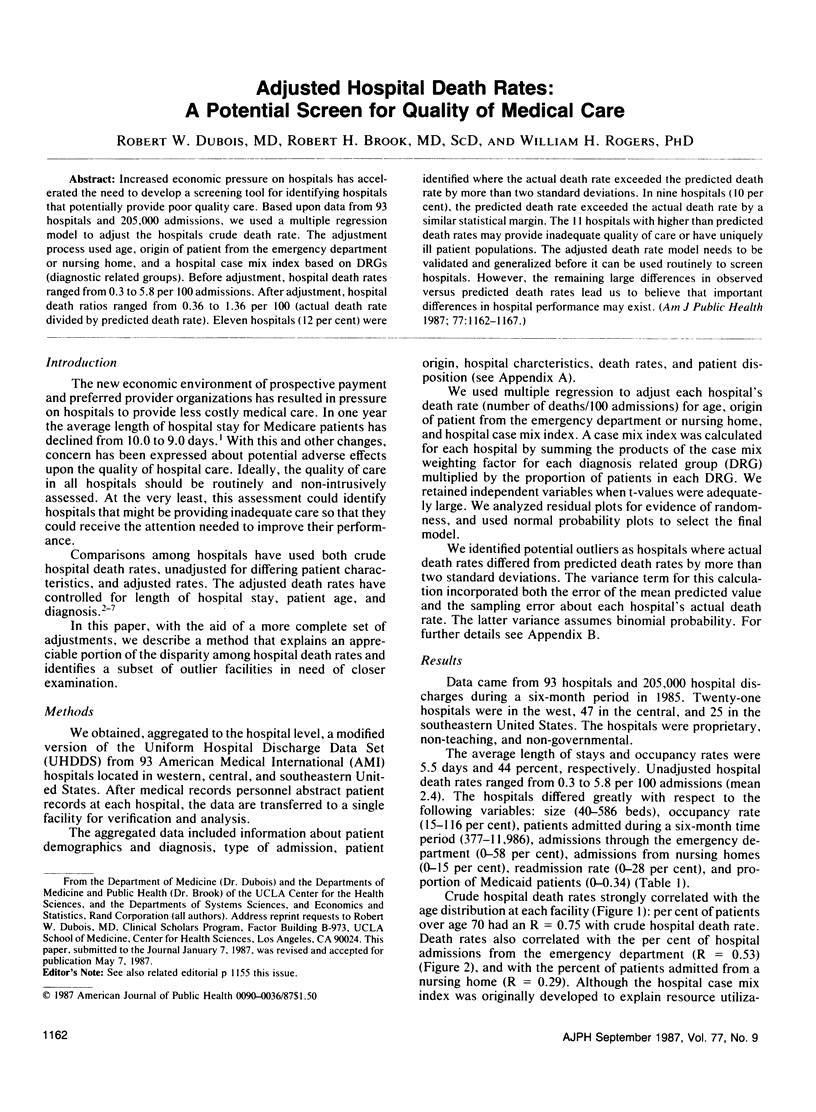
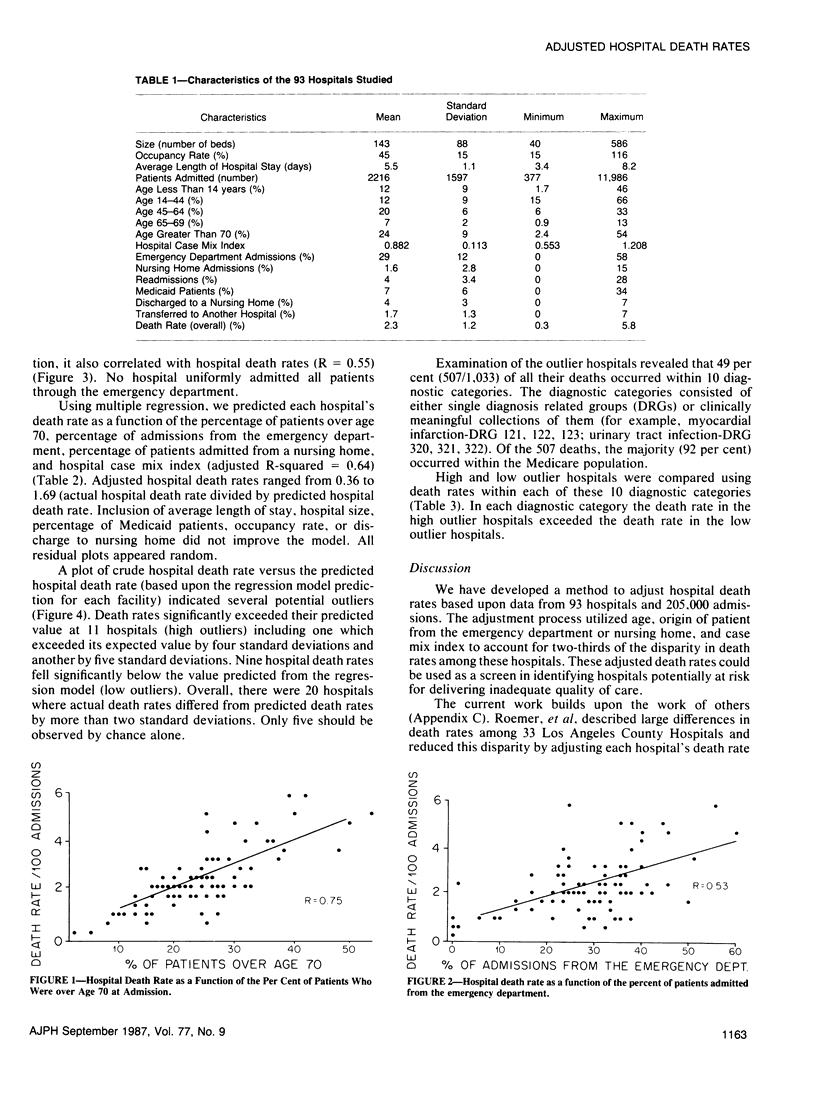
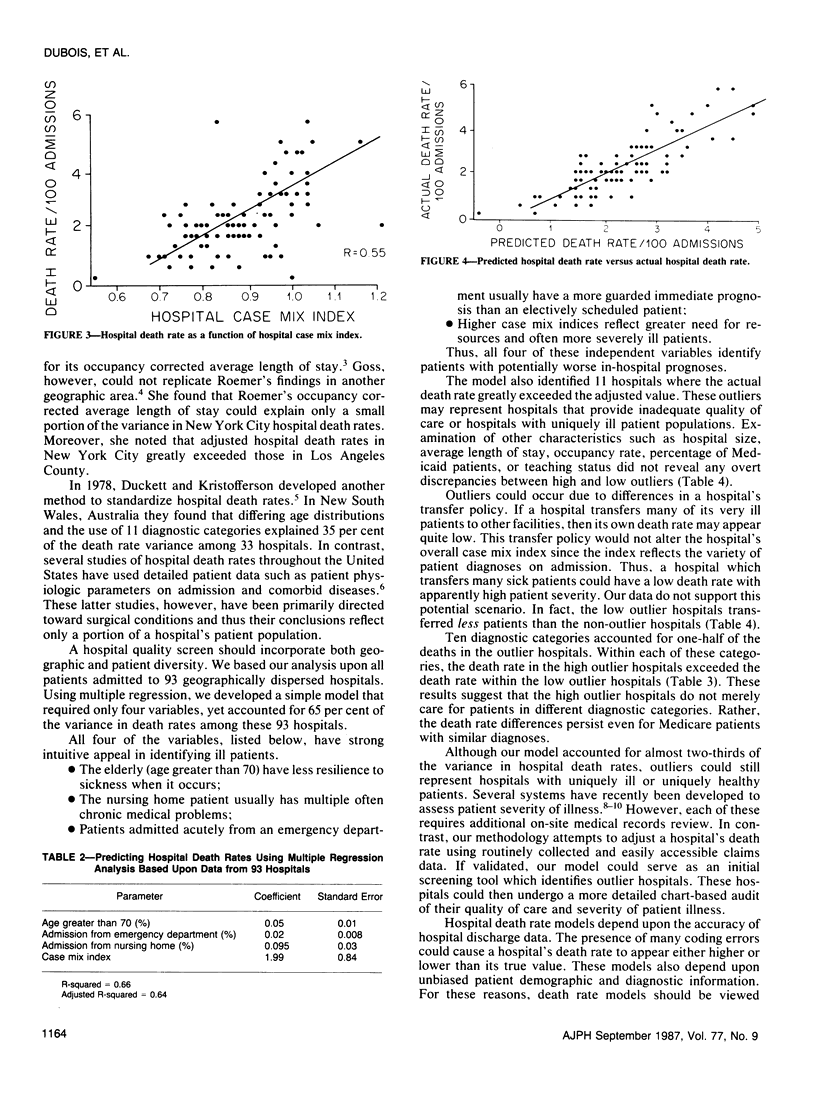
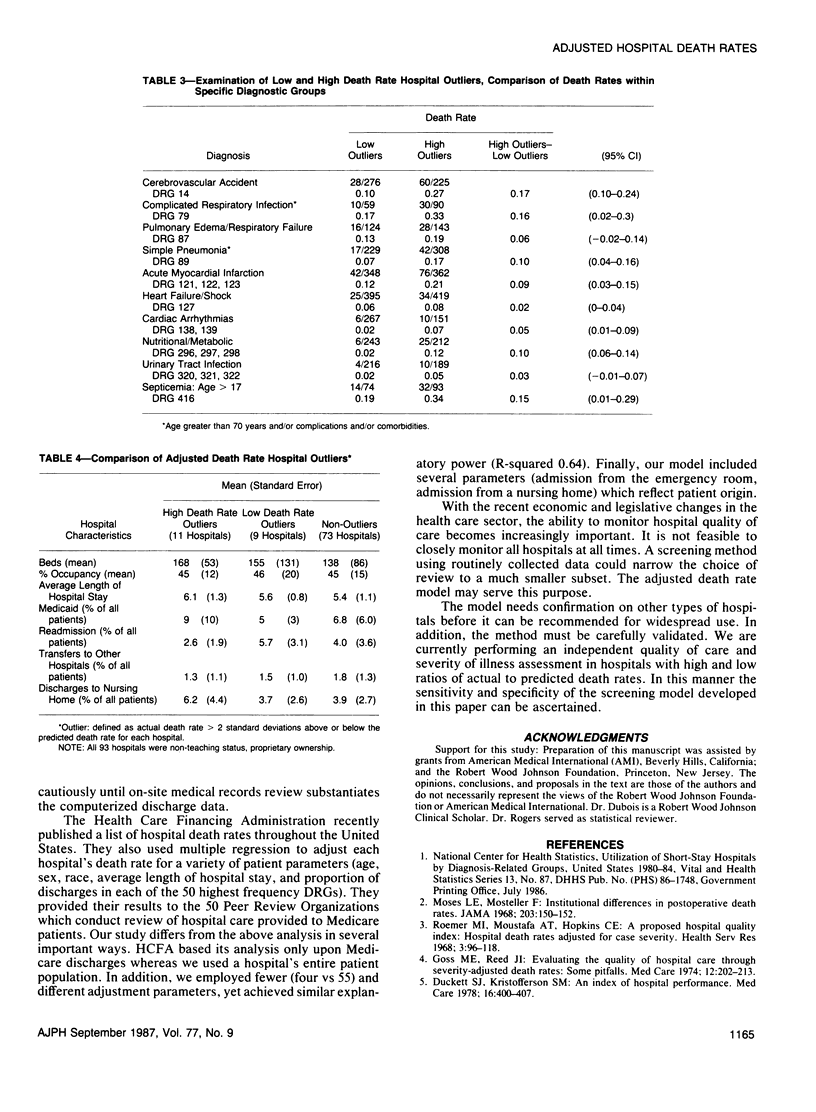
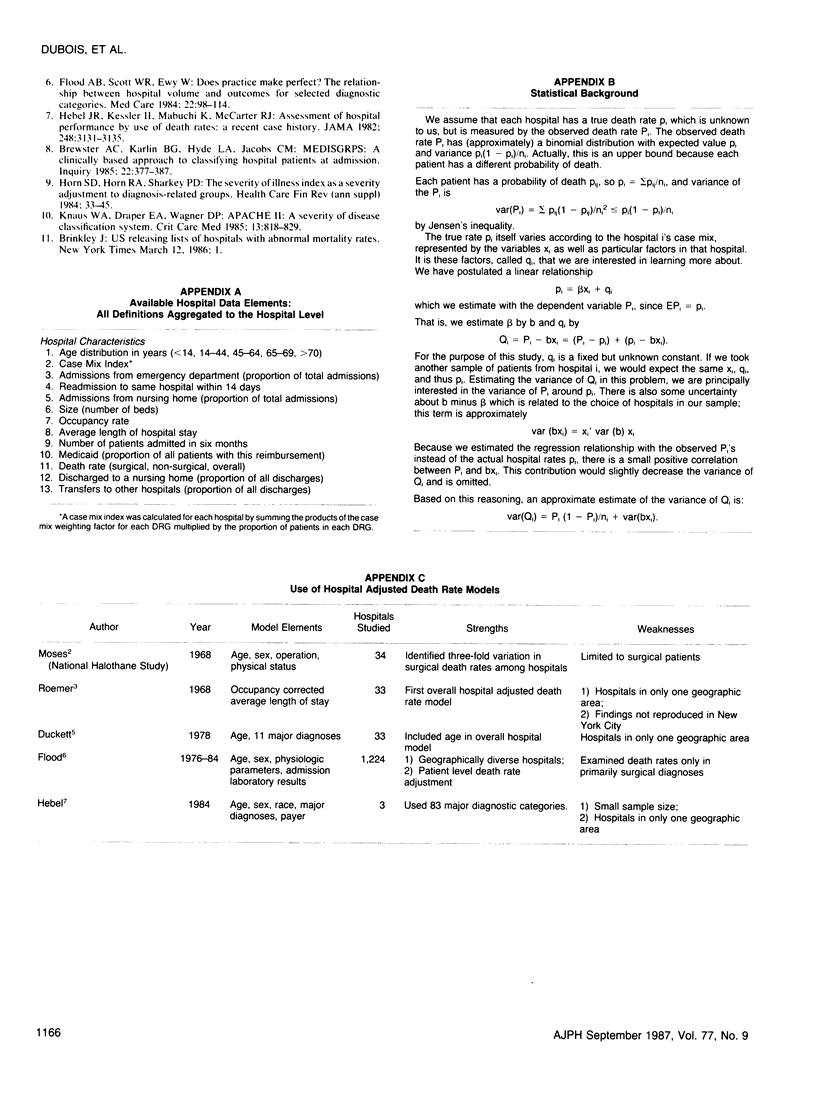
Selected References
These references are in PubMed. This may not be the complete list of references from this article.
- Brewster A. C., Karlin B. G., Hyde L. A., Jacobs C. M., Bradbury R. C., Chae Y. M. MEDISGRPS: a clinically based approach to classifying hospital patients at admission. Inquiry. 1985 Winter;22(4):377–387. [PubMed] [Google Scholar]
- Duckett S. J., Kristofferson S. M. An index of hospital performance. Med Care. 1978 May;16(5):400–407. doi: 10.1097/00005650-197805000-00004. [DOI] [PubMed] [Google Scholar]
- Goss M. E., Reed J. I. Evaluating the quality of hospital care through severity-adjusted death rates: some pitfalls. Med Care. 1974 Mar;12(3):202–213. doi: 10.1097/00005650-197403000-00002. [DOI] [PubMed] [Google Scholar]
- Hebel J. R., Kessler I. I., Mabuchi K., McCarter R. J. Assessment of hospital performance by use of death rates. A recent case history. JAMA. 1982 Dec 17;248(23):3131–3135. [PubMed] [Google Scholar]
- Horn S. D., Horn R. A., Sharkey P. D. The Severity of Illness Index as a severity adjustment to diagnosis-related groups. Health Care Financ Rev. 1984;Suppl:33–45. [PMC free article] [PubMed] [Google Scholar]
- Knaus W. A., Draper E. A., Wagner D. P., Zimmerman J. E. APACHE II: a severity of disease classification system. Crit Care Med. 1985 Oct;13(10):818–829. [PubMed] [Google Scholar]
- Roemer M. I., Moustafa A. T., Hopkins C. E. A proposed hospital quality index: hospital death rates adjusted for case severity. Health Serv Res. 1968 Summer;3(2):96–118. [PMC free article] [PubMed] [Google Scholar]


